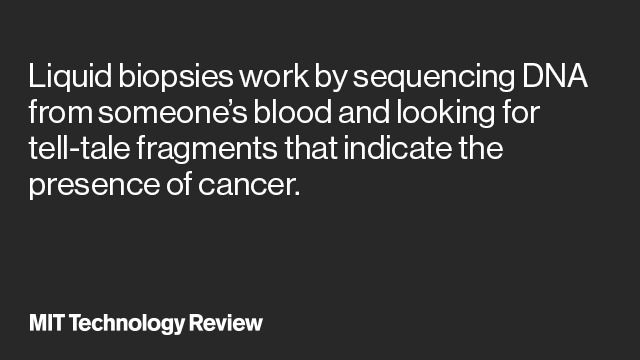Page 10614
Jan 7, 2017
Peter Diamandis Thinks We’re Evolving Toward “Meta-Intelligence”
Posted by Klaus Baldauf in categories: biological, evolution, neuroscience, Peter Diamandis
In Brief
- Peter Diamandis, founder and chairman of the XPRIZE Foundation, thinks the human species is headed for an evolutionary transformation.
- The evolution of life has slowly unfolded over 3.5 billion years; but its pace has rapidly increased in recent years. Diamandis believes this heralds the next, exciting stages of human evolution.
In the next 30 years, humanity is in for a transformation the likes of which we’ve never seen before—and XPRIZE Foundation founder and chairman Peter Diamandis believes that this will give birth to a new species. Diamandis admits that this might sound too far out there for most people. He is convinced, however, that we are evolving towards what he calls “meta-intelligence,” and today’s exponential rate of growth is one clear indication.
In an essay for Singularity Hub, Diamandis outlines the transformative stages in the multi-billion year pageant of evolution, and takes note of what the recent increasing “temperature” of evolution—a consequence of human activity—may mean for the future. The story, in a nutshell, is this—early prokaryotic life appears about 3.5 billion years ago (bya), representing perhaps a symbiosis of separate metabolic and replicative mechanisms of “life;” at 2.5 bya, eukaryotes emerge as composite organisms incorporating biological “technology” (other living things) within themselves; at 1.5 bya, multicellular metazoans appear as eukaryotes are yoked together in cooperative colonies; and at 400 million years ago, vertebrate fish species emerge onto land to begin life’s adventure beyond the seas.
Continue reading “Peter Diamandis Thinks We’re Evolving Toward ‘Meta-Intelligence’” »
Jan 7, 2017
The Lifeboat Foundation and LEAF join Forces
Posted by Montie Adkins in categories: biotech/medical, education, existential risks, life extension, lifeboat, nanotechnology, robotics/AI
I figured they would post it themselves but I got too excited and decided to spread it around.
The Lifeboat Foundation is a nonprofit organization devoted to encouraging the promotion and advancement of science while helping develop strategies to survive existential risks and the possible abuse of technology. They are interested in biotechnology, nanotechnology, robotics and AI and fostering the safe and responsible use of these powerful new technologies. The Life Preserver program is aligned with our mission to promote and develop rejuvenation biotechnology capable of combating age-related diseases.
We believe that a bright future awaits mankind and support the ethical and safe use of new medical technologies being developed today, thus we consider the goals of the Lifeboat Foundation to be compatible with ours and are pleased to move forward with them in official collaboration. As part of our commitment to the ethical progress of medical science LEAF promotes scientific research and learning via our crowdfunding website Lifespan.io and our educational hub at the LEAF website. A number of LEAF board members are already on the Scientific Advisory board for the Lifeboat Foundation and we look forward to working closely with them in the coming year.
Continue reading “The Lifeboat Foundation and LEAF join Forces” »
Jan 7, 2017
Cancer-fighting startup Grail is about to get a billion dollar boost
Posted by Shane Hinshaw in category: biotech/medical
Grail, a company that aims to use a blood test to spot cancer, has announced a massive round of funding for its experimental approach.

Break, Los Angeles, CA. Break brings you the best funny videos, funny photos, and comedy content on the web.
Jan 7, 2017
Using Fat to Help Wounds Heal Without Scars
Posted by Steve Hill in category: biotech/medical
Manipulating fat cells to aid healing without scarring.
PHILADELPHIA – Doctors have found a way to manipulate wounds to heal as regenerated skin rather than scar tissue. The method involves transforming the most common type of cells found in wounds into fat cells – something that was previously thought to be impossible in humans. Researchers began this work at the Perelman School of Medicine at the University of Pennsylvania, which led to a large-scale, multi-year study in connection with the Plikus Laboratory for Developmental and Regenerative Biology at the University of California, Irvine. They published their findings online in the journal Science on Thursday, January 5th, 2017.
Fat cells called adipocytes are normally found in the skin, but they’re lost when wounds heal as scars. The most common cells found in healing wounds are myofibroblasts, which were thought to only form a scar. Scar tissue also does not have any hair follicles associated with it, which is another factor that gives it an abnormal appearance from the rest of the skin. Researchers used these characteristics as the basis for their work – changing the already present myofibroblasts into fat cells that do not cause scarring.
Continue reading “Using Fat to Help Wounds Heal Without Scars” »
Jan 7, 2017
‘New York 2140’ Is a Sci-Fi Vision of the World Reshaped
Posted by Klaus Baldauf in categories: climatology, economics, sustainability
If a trip to Venice is your ideal holiday, then you’re going to love the future.

Most of us, however, will be quite sobered by Kim Stanley Robinson’s upcoming novel, New York 2140, a near-future projection of a world reshaped by climate change. Sea level has risen by 50 feet, flooding the Big Apple and countless coastal cities around the planet. Thousands of species have gone extinct.
Continue reading “‘New York 2140’ Is a Sci-Fi Vision of the World Reshaped” »
Jan 7, 2017
Evidence for Some of the Burden of Fat Tissue to Result from Increased Levels of Cellular Senescence
Posted by Steve Hill in categories: health, life extension
More evidence to support that excess fat ages the body and is linked with inflammation and senescent cells.
Excess visceral fat tissue is very bad for long-term health. Being obese is by some measures as harmful as a smoking habit when it comes to remaining life expectancy. Even modest amounts of excess weight have a measurable negative impact on the future trajectory of health and longevity. There is an enormous mountain of data to support these points, ranging from large human studies to simple but compelling experiments in which the surgical removal of fat from mice leads to extended life spans. Unfortunately we evolved in an environment of scarcity and so find it a challenge to stay slim in an environment of plenty; this is a high class problem to have in exchange for an end to unavoidable famine and malnutrition, but a problem nonetheless.
One of the contributing causes of degenerative aging is the growing presence of senescent cells in tissues. While investigating the effects of changes in the amount of fat tissue in mice, researchers here find evidence to suggest that some portion of the damage done by fat tissue occurs because it hosts many more senescent cells than would otherwise be present in the body. These cells produce a mix of inflammatory signals, and may well be a sizable cause of the well-known link between visceral fat and increased inflammation. Chronic inflammation alone drives a faster progression of most of the common fatal age-related conditions, and that is without considering all of the other damage done due to the signaling produced by senescent cells.
Jan 7, 2017
MIT Invented The Material We’ll Need To Build In Space
Posted by Klaus Baldauf in categories: materials, space
It’s ten times stronger than steel but is only 5% as dense, and it could revolutionize architecture on Earth, too.
Jan 7, 2017
Moore’s Law Will Soon End, but Progress Doesn’t Have to
Posted by Karen Hurst in categories: mobile phones, supercomputing
In 1965, Intel co-founder Gordon Moore published a remarkably prescient paper which observed that the number of transistors on an integrated circuit was doubling every two years and predicted that this pace would lead to computers becoming embedded in homes, cars and communication systems.
That simple idea, known today as Moore’s Law, has helped power the digital revolution. As computing performance has become exponentially cheaper and more robust, we have been able to do a lot more with it. Even a basic smartphone today is more powerful than the supercomputers of past generations.
Yet the law has been fraying for years and experts predict that it will soon reach its limits. However, I spoke to Bernie Meyerson, IBM’s Chief Innovation Officer, and he feels strongly that the end of Moore’s Law doesn’t mean the end of progress. Not by a long shot. What we’ll see though is a shift in emphasis from the microchip to the system as a whole.
Continue reading “Moore’s Law Will Soon End, but Progress Doesn’t Have to” »

















